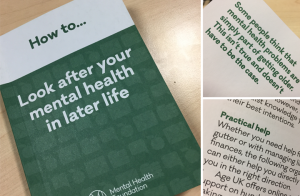Hilda Alexis has always wanted to be a nurse. But lack of educational opportunity and raising a family meant that being a healthcare assistant was the closest she thought she would ever get. Now, mid-career, she has a chance to realise her dream.
Alexis is one of the first 2,000 trainee nursing associates (NAs) who are part way through preparation for a new role in the NHS in England. The job is seen as a bridge between healthcare assistant and registered nurse (RN), taking on some tasks usually performed by the latter. But it will also offer a route for some NAs to qualify as nurses.
For Alexis, 49, who has worked for Barts health NHS trust in London for more than 15 years, this is the incentive she has been waiting for. “I’ve wanted to be a nurse all my life,†she says. “This is a wonderful opportunity for people like me. And I think it’s wonderful for the NHS.â€
Not everyone agrees. Some critics see NAs as a threat to nursing’s graduate-entry status, implemented five years ago, and a reinvention of the state-enrolled nurse (SEN), training for which was phased out from the 1980s.
Others are wary of the speed with which NAs are being introduced, seeing the initiative as a knee-jerk response to nurse shortages that need more considered workforce planning. The number of unfilled advertised nursing and midwifery posts in England is at a record of more than 34,000.
The idea of NAs emerged from a 2015 review of education and training for nursing and midwifery, which recommended widening the entry gate for healthcare assistants wishing to enter the professions. Creation of the role was announced the same year, with the first trainees starting in late 2016. In addition to the first 2,000, a further 5,000 are due to start in April.
Such has been the speed of implementation that the necessary legislative changes have yet to be made to enable NAs to be regulated by the Nursing and Midwifery Council. That means there are not yet any agreed standards of education, training, conduct and performance, although the council has just closed a consultation on its proposal that NAs will have to pay the same – £120 a year – to be on its books as nurses and midwives.
With the first 1,000 NAs due to complete their training at the end of this year, the timetable for finalising arrangements is extremely tight if they are to move seamlessly into new jobs.
Because of the lack of a national template, other than an advisory framework, training of the first NAs is being conducted in a variety of ways across the 35 pilot sites involved so far. While this has obvious pitfalls, it has enabled the new role to be tailored to local needs.
Prof Debbie Dzik-Jurasz, deputy director of the Barts Health academy and coordinator of the NA pilot across north-east London, which involves 127 trainees, says: “Our real focus has been on trying to develop a practitioner who understands the complexity of the health needs of our local population. We have much higher incidences of mental illness, particularly depression and anxiety, for example, and of diabetes in young people.â€
Training is principally on-the-job: trainees typically spend a day a week at a participating university, but the bulk of the course involves working under supervision in a variety of care settings. This ensures that those from hospital backgrounds get experience of community healthcare and vice versa.
Undoubtedly the most controversial aspect of the NA programme’s development has been the intention that NAs administer drugs: while national guidelines are awaited, universities are reportedly taking a range of approaches to teaching on this, depending on local practice and often on the backgrounds and experience of individual trainees.
Almost all the first 2,000 trainees are, like Alexis, experienced healthcare assistants. Those used to working in hospitals are likely to have less experience of helping with drugs administration. According to a breakdown by Health Education England (HEE), the healthcare education and training body, 84% of the 2,000 are women and the most common age range is 24-35 – although the youngest began at 18 and the oldest at 65.
Prof Warren Turner, dean of the school of health and social care at South Bank University, London, which is working with the north-east London pilot, says many of the trainees have never set foot in a university nor undertaken any non-vocational study since leaving school.
He recalls seeing one trainee hovering outside South Bank’s front door on her first day. Another arrived and they linked arms and marched in together. “I thought that said a lot,†Turner says. “If I’m honest, I was expecting a relatively high drop-out rate. But I could count on the fingers of one hand how many we have lost.â€
The minimum entry requirement for NA training is GCSE grade 9 to 4 (A to C) in maths and English, or key skills level 2 in each. Alexis is unusual in having further qualifications: a diploma in health and social care, gained in 2014, and a foundation degree in rehabiltation therapy, which she completed in 2016. With that recent discipline under her belt, she is finding the NA course not too much of a shock to the system.
“It’s intense, and the standard is high, but pretty straightforward,†she says.
Up to half of all qualified NAs are expected to elect to undergo a further two years’ workplace-based training to become registered nurses. Projections indicate that this could add 2,400 nurses a year to the workforce from 2021 (pdf) – a significant number, but small by comparison with the 22,000 a year from undergraduate nurse training.
Health employers are more interested in the NA role itself. They see it as a key part of a more flexible healthcare workforce, responding to changes in the way – and where – care is delivered, and freeing up nurses to take on more complex tasks. However, the NA role will always remain nurse-led.
Critics will be watching carefully to check that NAs, who will be paid at NHS band 4 (£19,406-£22,683) on qualification, do not simply become a cheap substitute for nurses, and that the job does not ossify in the way that the SEN route became a dead end for too many.
The Royal College of Nursing, which says it is already getting reports of trusts planning to cut registered nurse posts and replace them with NAs, warns: “Substitution of registered nurses with NAs by financially challenged employers, particularly in the context of significant shortfalls in the registered nurse workforce, could have unintended consequences on the ability to provide safe and effective care.â€
There are also many issues yet to be resolved, not least professional standards for NAs and the cost of their training to employers. Although the HEE says it is meeting all costs of the pilot trainees, who are paid at band 3 (£16,968-£19,852), NHS trusts fear they will have to bear the cost in the long term, including paying for cover for trainees while they gain experience of different healthcare settings.
Dzik-Jurasz says: “We will have to think hard about how we model that. It’s really important that associates get this wider experience, and it’s great to see how excited they are for the learning opportunities, but it’s a significant issue for the employer when they are spending six to eight weeks at a time working in other areas.â€









